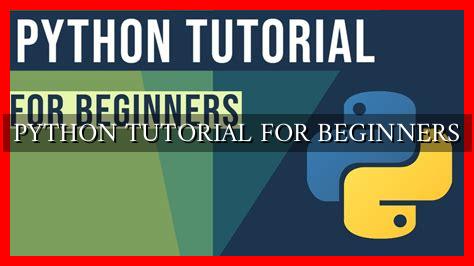-
Table of Contents
PYTHON TUTORIAL FOR BEGINNERS
Python is a versatile and powerful programming language that is widely used in various fields such as web development, data science, artificial intelligence, and more. If you are new to programming or looking to learn Python, this tutorial is designed to help beginners get started with the basics of Python programming.
Getting Started with Python
Before diving into Python programming, you need to install Python on your computer. You can download the latest version of Python from the official website here. Once you have installed Python, you can start writing and running Python code using a text editor or an Integrated Development Environment (IDE) such as PyCharm or Jupyter Notebook.
Basic Syntax and Data Types
Python has a simple and easy-to-read syntax that makes it ideal for beginners. Here are some basic concepts to get you started:
- Variables: Variables are used to store data values in Python.
. You can assign a value to a variable using the assignment operator (=).
- Data Types: Python supports various data types such as integers, floats, strings, lists, tuples, dictionaries, and more.
- Comments: You can add comments to your code using the hash symbol (#). Comments are ignored by the Python interpreter and are used to explain the code.
Control Flow and Loops
Control flow statements such as if-else, for loops, and while loops are used to control the flow of execution in Python. Here are some examples:
- If-Else Statement:
- For Loop:
- While Loop:
“`python
x = 10
if x > 5:
print(“x is greater than 5”)
else:
print(“x is less than or equal to 5”)
“`
“`python
for i in range(5):
print(i)
“`
“`python
i = 0
while i < 5:
print(i)
i += 1
“`
Functions and Modules
Functions allow you to encapsulate code into reusable blocks. You can define a function using the def keyword and call it whenever needed. Python also supports modules, which are files containing Python code that can be imported into other Python programs.
Working with Libraries
Python has a rich ecosystem of libraries that extend its functionality for various purposes. Some popular libraries include NumPy for numerical computing, Pandas for data manipulation, Matplotlib for data visualization, and TensorFlow for machine learning.
Conclusion
In conclusion, Python is a beginner-friendly programming language that is widely used in the industry for its simplicity and versatility. By following this tutorial and practicing coding exercises, you can build a solid foundation in Python programming. Remember to explore more advanced topics such as object-oriented programming, file handling, and web development to further enhance your Python skills.
Happy coding!





